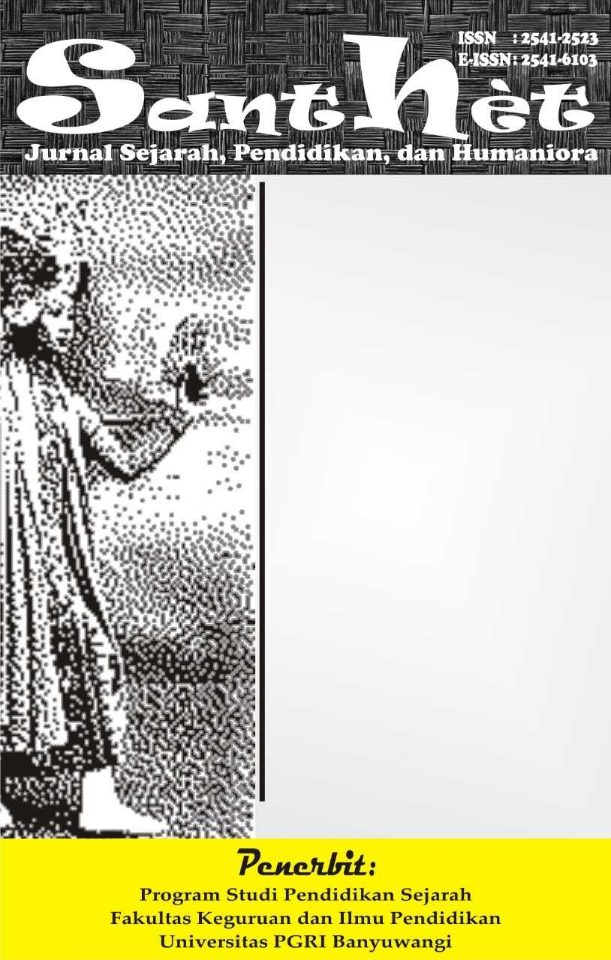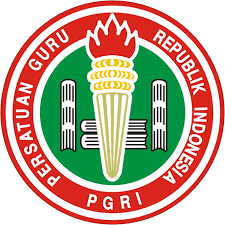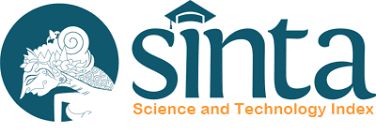THE INFLUENCE OF SOCIAL MEDIA MARKETING ACTIVITY AND BRAND EQUITY ON CUSTOMER RESPONSE TO SKINCARE PRODUCTS
Pengaruh Aktivitas Sosial Media Marketing dan Ekuitas Merek terhadap Respon Customer Pada Produk Skincare
DOI:
https://doi.org/10.36526/santhet.v9i1.4983Keywords:
Social Media Marketing Activity (SMMA), Brand awareness, Brand Image, E-Wom, CommitmentAbstract
This study analyzes the impact of social media marketing activities (SMMA) on brand equity and consumer response in the skincare product. Customer responses in this research are divided into 2, namely: E-Wom and commitment. Customer response itself is the customer's response to the products or services offered by the Company regarding the products used. Customer response itself is encouraged because of the social media marketing activity carried out by the Company which aims to increase brand awareness and brand image of the company in order to get a positive response. from consumers. The research survey was conducted on 200 consumers who use social media managed by the Cosrx brand, and the data was analyzed through structural equation modeling using the Smart PLS v.4.0.9.9 application. The research results show that trends are one of the most important components of SMMA and SMMA in Cosrx skincare has a significant impact on brand awareness and brand image. Apart from that, the research results also show that brand awareness and brand image significantly influence E-Wom and commitment. It is hoped that the results of this research can be used as fundamental data in developing SMMA strategies for the beauty industry, in particular by investigating the relative importance of each SMMA component and analyzing the impact of SMMA.
References
Agichtein, E., Castillo, C., Donato, D., Gionis, A., & Mishne, G. (2008). Finding high-quality content in social media. WSDM’08 - Proceedings of the 2008 International Conference on Web Search and Data Mining, 183–193. https://doi.org/10.1145/1341531.1341557
Aji, P. M., Nadhila, V., & Sanny, L. (2020). Effect of social media marketing on instagram towards purchase intention: Evidence from Indonesia’s ready-to-drink tea industry. International Journal of Data and Network Science, 4(2), 91–104. https://doi.org/10.5267/j.ijdns.2020.3.002
Amelia Dahlan, D., & Rizal Rivai, A. (n.d.). PENGARUH SOCIAL MEDIA MARKETING ACTIVITIES (SMMA) TERHADAP BRAND EQUITY SERTA DAMPAKNYA PADA E-WOM DAN KOMITMEN RELASIONAL.
Baeur, R. A. (1960). Consumer Behavior as Risk-Taking, Dynamic Marketing for Changing World. American Marketing Association. https://www.scirp.org/reference/referencespapers?referenceid=1471947
Bagozzi, R. P., & Dholakia, U. M. (2002). Intentional social action in virtual communities. Journal of Interactive Marketing, 16(2), 2–21. https://doi.org/10.1002/dir.10006
Banerji, R., & Singh, A. (2024). Do social media marketing activities promote customer loyalty? A study on the e-commerce industry. LBS Journal of Management & Research, 22(1), 93–109. https://doi.org/10.1108/lbsjmr-04-2023-0016
Becker, K., Lee, J. W., & Nobre, H. M. (2018). The concept of luxury brands and the relationship between consumer and luxury brands. Journal of Asian Finance, Economics and Business, 5(3), 51–63. https://doi.org/10.13106/jafeb.2018.vol5.no3.51
BİLGİN, Y. (2018). THE EFFECT OF SOCIAL MEDIA MARKETING ACTIVITIES ON BRAND AWARENESS, BRAND IMAGE AND BRAND LOYALTY. Business & Management Studies: An International Journal, 6(1), 128–148. https://doi.org/10.15295/bmij.v6i1.229
Bodaghi, H., Nobar, K., Kalejahi, H. K., Rostamzadeh, R., & Nobar, H. B. K. (2020). Impact of social media marketing activities on brand equity and brand commitment in the leather industry. In Int. J. Business Excellence (Vol. 20, Issue 2).
Boyd, D. M., & Ellison, N. B. (2007). Social network sites: Definition, history, and scholarship. Journal of Computer-Mediated Communication, 13(1), 210–230. https://doi.org/10.1111/j.1083-6101.2007.00393.x
Chae, H., Ko, E., & Han, J. (2015). How do customers’ SNS participation activities impact on customer equity drivers and customer loyalty? Focus on the SNS services of a global SPA brand. Journal of Global Scholars of Marketing Science: Bridging Asia and the World, 25(2), 122–141. https://doi.org/10.1080/21639159.2015.1012809
Chen, S. C., & Lin, C. P. (2019). Understanding the effect of social media marketing activities: The mediation of social identification, perceived value, and satisfaction. Technological Forecasting and Social Change, 140, 22–32. https://doi.org/10.1016/j.techfore.2018.11.025
Daugherty, T., Eastin, M. S., & Bright, L. (2008). Exploring Consumer Motivations for Creating User-Generated Content. Journal of Interactive Advertising, 8(2), 16–25. https://doi.org/10.1080/15252019.2008.10722139
Ding, Y., & Keh, H. T. (2016). A re-examination of service standardization versus customization from the consumer’s perspective. Journal of Services Marketing, 30(1), 16–28. https://doi.org/10.1108/JSM-02-2015-0088
Dwyer, F. R., Schurr, P. H., & Oh, S. (1987). Developing Buyer-Seller Relationships. In Source: Journal of Marketing (Vol. 51, Issue 2).
Gallaugher, J. M. (2010). Social Media and Customer Dialog Management at Starbucks. https://www.researchgate.net/publication/220500699
Godey, B., Manthiou, A., Pederzoli, D., Rokka, J., Aiello, G., Donvito, R., & Singh, R. (2016). Social media marketing efforts of luxury brands: Influence on brand equity and consumer behavior. Journal of Business Research, 69(12), 5833–5841. https://doi.org/10.1016/j.jbusres.2016.04.181
Keller. (2009). Marketing Management.
Kelly, L., Kerr, G., & Drennan, J. (2010). Avoidance of Advertising in Social Networking Sites. Journal of Interactive Advertising, 10(2), 16–27. https://doi.org/10.1080/15252019.2010.10722167
Kim, A. J., & Ko, E. (2010). Impacts of luxury fashion brand’s social media marketing on customer relationship and purchase intention. Journal of Global Fashion Marketing, 1(3), 164–171. https://doi.org/10.1080/20932685.2010.10593068
Kim, A. J., & Ko, E. (2012). Do social media marketing activities enhance customer equity? An empirical study of luxury fashion brand. Journal of Business Research, 65(10), 1480–1486. https://doi.org/10.1016/j.jbusres.2011.10.014
Kim, N., & Shim, C. (2018). Social capital, knowledge sharing and innovation of small- and medium-sized enterprises in a tourism cluster. International Journal of Contemporary Hospitality Management, 30(6), 2417–2437. https://doi.org/10.1108/IJCHM-07-2016-0392
Manthiou, A., Chiang, L., & Tan. L. (2013). Identifying and Responding to Customer Needs on Facebook Fan Pages. International Journal of Technology and Human Interaction. https://www.researchgate.net/publication/280990987_Identifying_and_Responding_to_Customer_Needs_on_Facebook_Fan_Pages
Martin, K., & Todorov, I. (2010). How Will Digital Platforms be Harnessed in 2010, and How Will They Change the Way People Interact with Brands? Journal of Interactive Advertising, 10(2), 61–66. https://doi.org/10.1080/15252019.2010.10722170
Meyer, J. P., & Allen, N. J. (1984). Testing the “Side-Bet Theory” of Organizational Commitment: Some Methodological Considerations. In Journal of Applied Psychology (Vol. 69).
Moorman, C., Zaltman, G., & Deshpande, R. (1992). Relationships between Providers and Users of Market Research: The Dynamics of Trust within and between Organizations. In Source: Journal of Marketing Research (Vol. 29, Issue 3).
Muntinga, D. G., Moorman, M., & Smit, E. G. (2011). Introducing COBRAs. International Journal of Advertising, 30(1), 13–46. https://doi.org/10.2501/ija-30-1-013-046
Naaman, M., Becker, H., & Gravano, L. (2011). Hip and trendy: Characterizing emerging trends on Twitter. Journal of the American Society for Information Science and Technology, 62(5), 902–918. https://doi.org/10.1002/asi.21489
Nam Kihwa, & Yeo jungsung. (2011). A Study on Consumers’ Acceptance Process of Mobile Advertising. Business Computer Sciece. https://www.semanticscholar.org/paper/A-Study-on-Consumers%E2%80%99-Acceptance-Process-of-Mobile-Kihwa-Yeo%EF%BC%8CJungsung/679252839026fc10b197ad304b17bb423cb195af
Neil A. Granitz, & J ward. (1996). Virtual Community: a Sociocognitive Analysis. https://www.semanticscholar.org/paper/Virtual-Community%3A-a-Sociocognitive-Analysis-Granitz-Ward/27f4352627a2eef6b9130ec6b5dbe992cae7c4d4
Park, W. S. (2013). Effects of Band Equity on Behavioral Intention in Food Service Franchising Businesses.
Pham, P. H. M., & Gammoh, B. S. (2015). Characteristics of social-media marketing strategy and customer-based brand equity outcomes: A conceptual model. International Journal of Internet Marketing and Advertising, 9(4), 321–337. https://doi.org/10.1504/IJIMA.2015.072885
Prasetio, A., Rahman, D. A., Sary, F. P., Pasaribu, R. D., & Sutjipto, M. R. (2022). The role of Instagram social media marketing activities and brand equity towards airlines customerresponse. International Journal of Data and Network Science, 6(4), 1195–1200. https://doi.org/10.5267/j.ijdns.2022.6.014
Richter, A., & Koch, M. (2007). Social Software-Status quo und Zukunft. http://www.unibw.de/wow5_3/
Samosir, J., Purba, O. R., Ricardianto, P., Dinda, M., Rafi, S., Sinta, A. K., Wardhana, A., Anggara, D. C., Trisanto, F., & Endri, E. (2023). The role of social media marketing and brand equity on e-WOM: Evidence from Indonesia. International Journal of Data and Network Science, 7(2), 609–626. https://doi.org/10.5267/j.ijdns.2023.3.010
sano. (2015). An empirical study of the effect of social media marketing activities upon customer satisfaction, positive word-of-mouth and commitment in indemnity insurance service. https://www.semanticscholar.org/paper/An-empirical-study-of-the-effect-of-social-media-in-Sano/f2c50d1c514fee1f611723d3d943c9676940eb32
Schiffman, L. G., & Kanuk, L. L. (1987). Consumer Behavior. (L.G Schiffman & L.L Kanuk, Eds.; 6th ed.). Prentice Hall.
Schlosser, A. E. (2005). Posting versus lurking: Communicating in a multiple audience context. In Journal of Consumer Research (Vol. 32, Issue 2, pp. 260–265). https://doi.org/10.1086/432235
Schmenner, R. W. (n.d.). How Can Service Business Survive and Prosper? https://www.researchgate.net/publication/12997398
Seo, E. J., & Park, J. W. (2018). A study on the effects of social media marketing activities on brand equity and customer response in the airline industry. Journal of Air Transport Management, 66, 36–41. https://doi.org/10.1016/j.jairtraman.2017.09.014
Seo, W. s, & Kim, M. K. (2003). A study on the effect of consumer behavior intention of brand equity in hotel. Korean Journal of Tourism Research.
Sernovitz, A. (2012). Word of mouth marketing : how smart companies get people talking. Greenleaf Book Group Press. https://perpus.petra.ac.id/catalog/site/detail?id=130415
Taecharungroj, V. (2017). Starbucks’ marketing communications strategy on Twitter. Journal of Marketing Communications, 23(6), 552–571. https://doi.org/10.1080/13527266.2016.1138139
Wardhana, A. (2022). Brand Image Dan Brand Awareness. Brand Marketing: The Art of Branding, January.
Zhang, J., Shabbir, R., Pitsaphol, C., & Hassan, W. (2014). Creating Brand Equity by Leveraging Value Creation and Consumer Commitment in Online Brand Communities: A Conceptual Framework. International Journal of Business and Management, 10(1). https://doi.org/10.5539/ijbm.v





























